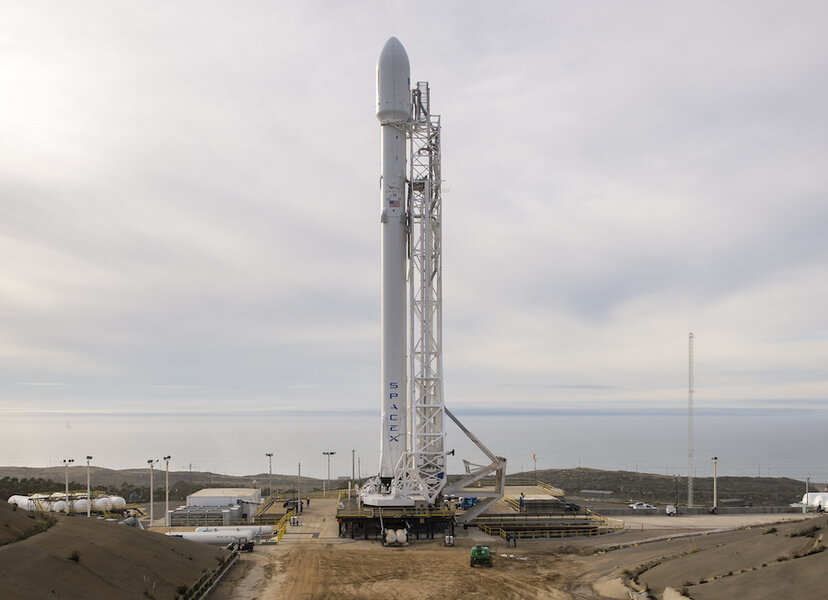SpaceX to launch satellite, probably crash rocket into drone barge
Loading...
SpaceX does not have high hopes for its next drone barge landing attempt.
On Wednesday, the private space travel company will launch another Falcon 9 rocket into space, this one carrying a telecommunications satellite into orbit. If all goes well, after the satellite separates from the rocket, the Falcon 9 will turn around and head for home, ideally by landing on a small ship in the ocean.
A SpaceX mission overview reveals the rocket company does not expect the landing to be a success.
Wednesday's remote barge landing marks SpaceX's fourth attempt. The company nearly succeeded in January, but a rocket failed to lock into place, tipping over and exploding instead .
Wednesday's mission has even lower chances of success, say SpaceX materials.
“This mission is going to a Geostationary Transfer Orbit. Following stage separation, the first stage of the Falcon 9 will attempt an experimental landing on the 'Of Course I Still Love You' droneship. Given this mission’s unique GTO profile, a successful landing is not expected,” the mission overview stated.
The SES-9 telecommunication satellite will cover the Asia-Pacific region once in orbit. The satellite launch was originally scheduled for September 2015, but suffered from delays after a SpaceX rocket experienced a mid-air explosion in July.
To make up for lost time, SpaceX agreed to launch the satellite higher into orbit, according to Verge. The feat could be a good business move for CEO Elon Musk, by delivering more than the client expected, but the maneuver will require more fuel, put the Falcon 9 in a more difficult location, and make a successful touchdown much less likely.
Why attempt a sea landing when the logistics point to a flop? They might not have a choice, say experts.
“If you’re reserving some fuel to slow down the [rocket], stop it, start it flying back in the opposite direction and fly it all the way back to the launch site… you know that’s going to take a lot of fuel,” Jonathan McDowell of the Harvard-Smithsonian Center for Astrophysics told The Christian Science Monitor in a January interview. “If you just turn it around a little bit and come back to a site that is closer offshore, you’re not using as much fuel to get back and you’ll have more fuel to accelerate back toward orbit.”
In other words, since it will burn extra fuel to get the satellite into a higher orbit, the Falcon 9 may not have enough left to attempt a landing at the launch site, making the a sea landing the only option. An attempt at a barge landing, however unlikely its prospects of success, could safely use up the rocket's remaining fuel while gaining valuable information about the landing process.
SpaceX needs to master the art of the drone landing before completing the design and construction of its next rocket type, the Falcon 9 Heavy, Dr. McDowell explained to the Monitor. The Falcon 9 Heavy will essentially be three Falcon 9 ships linked together. Two will peel off after launch and land at the launch site, but the third, which will travel deeper into space, will only be able to land on a barge.
Mr. Musk predicted a large margin of error even in ideal conditions.








